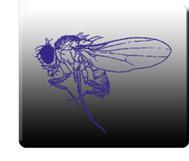Flesh Fly Biology and Identification
Update£º2016/3/24 3:49:10 View£º

Flesh flies are sometimes mistaken for house flies, due to their markings and coloration. Flesh flies are large than house flies, are gray in color and have a checkerboard pattern on the top of their abdomen. Its prothorax has three dark stripes; the house fly has four stripes on its prothorax. The primary breeding site for this flying pest is in or on dead animal carcasses, although they are also found in garbage.
Flesh flies are helpful in forensic entomology because they are usually the first to arrive at a carcass after an animal dies. Using the larvae of this fly (found at murder scenes) helps the entomologist pinpoint the time of death. Blow flies and bottle flies are also helpful in this manner.
The larvae (or maggot) of this fly develops quickly (within a few days) and then crawls a short distance away to burrow into the soil. Once under the soil, the maggot pupates, with adult flies emerging in a few days.

